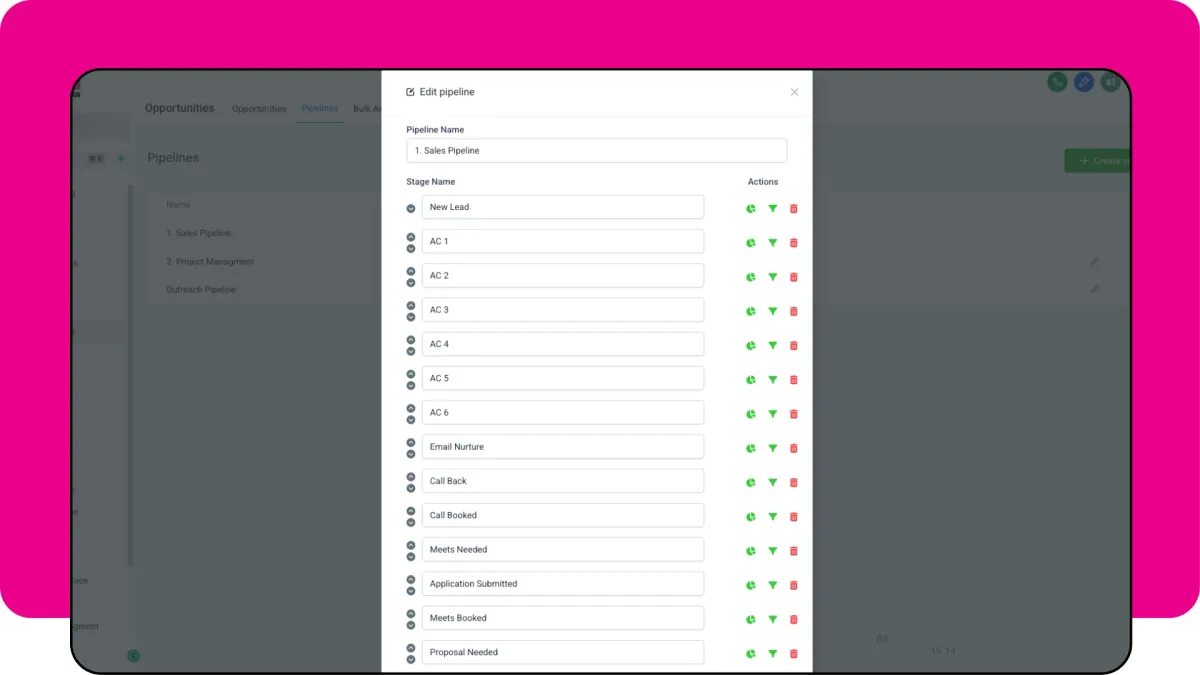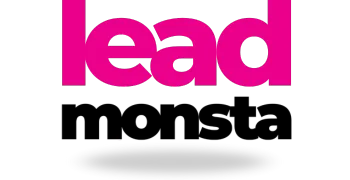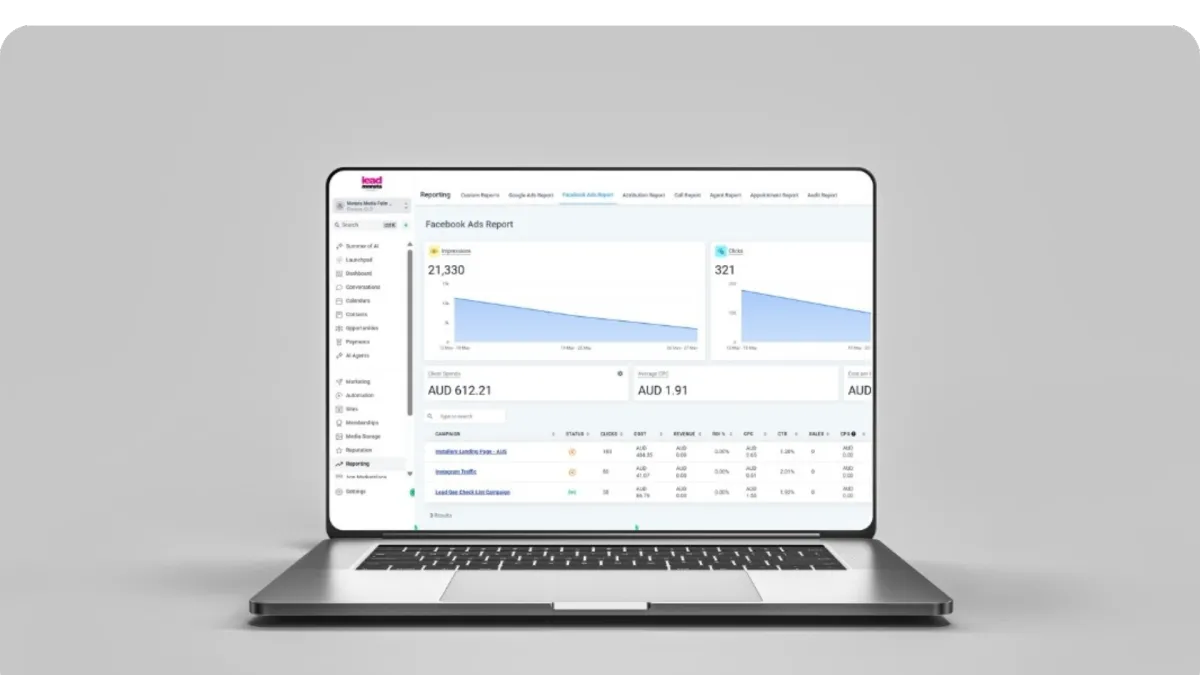
Designing Your Deal Flow: Customising Lead Monsta Sales Pipeline Stages for Your Unique Aussie Business
Following our initial overview of Lead Monsta's Opportunities (Pipelines), we have established that a visual sales pipeline is an essential tool for tracking and managing potential deals. However, its true power and utility are only fully realised when it accurately reflects the specific way your business operates. A "one-size-fits-all" pipeline, with generic and overly simplified stages, rarely captures the unique nuances of your sales process. To truly gain maximum clarity and transform your pipeline from a simple tracker into a strategic management tool, you need to customise your pipeline stages.
This is where the flexibility of Lead Monsta's pipeline customisation becomes a key advantage. The platform is designed to allow Australian Small to Medium Enterprises (SMEs) to define and tailor the stages within their sales pipelines, enabling you to create a visual roadmap that accurately mirrors your specific customer journey and sales cycle.
The goal of this article is to serve as a comprehensive guide for Aussie SMEs on how to strategically approach CRM pipeline design SME. We will explore how to customise your pipeline stages within Lead Monsta for optimal sales process management, clear team understanding, intelligent automation, and vastly improved conversion tracking and forecasting.
Table of Contents:
The Power of a Customised Sales Pipeline for Your Aussie Business
Accessing & Customising Pipelines in Lead Monsta
Navigating to Your Pipeline Settings
Strategic Considerations for Defining Your Effective Deal Stages
Step 1: Map Your Current Sales Process from Start to Finish
Step 3: Ensure Distinct and Objective Exit Criteria for Each Stage
Step 4: Do Not Overcomplicate (Especially When Starting Out)
Step 5: Consider Assigning a 'Probability to Close' for Smarter Forecasting
Example Pipeline Stage Designs for Different Australian Business Models
Example 1: Service-Based Business (e.g., Consultant or Agency in Elanora)
Example 2: Local Tradesperson Business (e.g., Plumber, Electrician)
Configuring Stage Settings in Lead Monsta
Using Multiple Pipelines for Different Processes Intelligently
Reviewing & Iterating on Your Pipeline Design for Continuous Improvement
Why Generic Pipeline Stages Often Fall Short
Many CRM systems come with default stages like "Lead > Contacted > Qualified > Closed." While better than nothing, this generic approach often falls short for a business seeking to operate with intelligence and precision.
Lack of Nuance: Every business has a distinct sales process. A local tradesperson has a different customer journey than a B2B consultant or a digital product business. Generic stages fail to capture the critical milestones unique to your operation, making it difficult to understand where a deal truly stands.
Difficulty in Identifying Specific Bottlenecks: If your stages are too broad (e.g., a single "In Progress" stage), it becomes nearly impossible to identify exactly where deals are slowing down. Are you losing momentum after the initial call, or after the proposal has been sent? A generic pipeline obscures these vital insights.
Team Confusion and Inconsistent Data: If your pipeline stages do not intuitively match the actual sales activities your team performs, it leads to confusion. Team members might interpret stages differently, resulting in inconsistent data entry and a pipeline that does not reflect reality.
Inaccurate Reporting and Forecasting: Forcing deals into ill-fitting stages fundamentally compromises the integrity of your sales data. This leads to inaccurate reports on conversion rates between stages and unreliable sales forecasts, hindering your ability to make informed strategic decisions.
The Power of a Customised Sales Pipeline for Your Aussie Business
When you tailor sales process Australia wide, or even for your specific local market, by customising your pipeline, you unlock numerous strategic advantages:
An Accurate Reflection of Your Unique Process: A customised pipeline maps directly to how your business actually sells. Each stage represents a real, meaningful milestone in your specific customer's journey, providing a true and intelligent representation of your deal flow.
Improved Clarity and Alignment for Your Sales Team: When stages are named and defined clearly based on your actual sales activities, everyone on your team (even if it's a team of one) understands what each stage means and what specific actions are required to advance a deal. This alignment is key for consistent, strategic action.
Precise Identification of Bottlenecks: With granular, well-defined stages, you can pinpoint exactly where deals are getting stuck or dropping off. This allows you to perform data-driven process improvements for better sales workflow optimisation.
More Accurate and Meaningful Sales Forecasting: You can assign a 'probability to close' percentage to each of your custom stages. This leads to far more precise and reliable revenue predictions based on the value and stage of deals currently in your pipeline.
Enhanced and Intelligent Automation Opportunities: Custom stages serve as highly specific triggers for automation workflows. For example, moving a deal to your custom "Proposal Sent" stage can automatically initiate a timed follow-up sequence. This level of precision is impossible with generic stages.
Tailored Reporting and Analytics for Relevant Insights: Your reports on conversion rates, sales velocity, and sales cycle length become infinitely more valuable because they are based on stages that are actually relevant to your business model.
Accessing & Customising Pipelines in Lead Monsta
Lead Monsta makes the technical process of customising your GHL sales stages straightforward.
Navigating to Your Pipeline Settings
You can typically find the interface to manage your sales pipelines in one of two places within your Lead Monsta dashboard:
Under the main "Opportunities" or "Pipelines" section, there is often a "Pipelines" tab or link at the top of the screen that takes you to the editor.
Alternatively, pipeline settings may be located within the main "Settings" menu of your account.
Creating a New Pipeline vs. Editing an Existing One
Lead Monsta often provides a default pipeline upon account setup. You have a strategic choice:
Edit the Existing Pipeline: If your sales process is relatively straightforward, you can simply edit the stages of the default pipeline to match your needs.
Create a New Pipeline from Scratch: This is often the smarter choice if you have multiple, distinct sales processes. For example, you might create a "New Client Sales Pipeline" and a separate "Existing Client Upsell Pipeline," as the stages and activities for each would be different.
Adding, Deleting, Renaming, and Reordering Stages
The interface for modifying pipeline stages is usually a simple list editor. You can typically:
Add a New Stage: Click a button to add a new stage to the list.
Rename a Stage: Click on an existing stage name to edit it.
Delete a Stage: Remove stages that are not relevant to your process.
Reorder Stages: Use a simple drag-and-drop functionality to arrange the stages in the logical order of your sales process.
Note: It is important to be aware that Lead Monsta will typically automatically create the final outcome statuses of "Won," "Lost," and "Abandoned" for every pipeline you create. Your customisation efforts will focus on defining the active stages that lead up to one of these final outcomes.
Strategic Considerations for Defining Your Effective Deal Stages
Before you even click into the pipeline settings in Lead Monsta, the most critical work happens with a pen and paper or a whiteboard. Designing effective deal stages is a strategic exercise.
Step 1: Map Your Current Sales Process from Start to Finish
Begin by sketching out every distinct step a potential customer goes through, from the moment they are identified as a lead to the moment they become a paying customer in your Australian business. What are the key milestones? What interactions must take place? Be detailed and realistic.
Step 2: Keep Stage Names Action-Oriented and Clear
The name of each stage should reflect an action that has been completed or a key milestone that has been reached. This provides absolute clarity for anyone looking at the pipeline.
Avoid vague names like: "In Progress," "Follow-Up," "Meeting."
Use clear, action-oriented names like: "Initial Contact Made," "Discovery Call Scheduled," "Needs Analysis Complete," "Proposal Presented," "Contract Sent," "Negotiation Phase."
Step 3: Ensure Distinct and Objective Exit Criteria for Each Stage
This is a crucial step for maintaining data integrity and team consistency. For each stage, you must be able to clearly answer the question: "What specific event or action moves a deal from this stage to the next?" These exit criteria should be objective, not based on a subjective "feeling."
Example: The exit criterion for "Discovery Call Scheduled" is simple: the call has actually taken place. The exit criterion for "Proposal Presented" is that the proposal document has been sent to the client.
Step 4: Do Not Overcomplicate (Especially When Starting Out)
While granularity is good, having too many stages can make your pipeline unwieldy and difficult to manage. A good starting point is often between 5 and 7 active stages. You can always add more detail later if you find a specific part of your process requires more granular tracking. The goal is clarity, not complexity.
Step 5: Consider Assigning a 'Probability to Close' for Smarter Forecasting
For each stage you define, consider assigning a percentage likelihood of that deal eventually being won. This is invaluable for sales forecasting.
Example: New Lead (5%), Discovery Call Scheduled (20%), Proposal Sent (50%), Negotiation (75%). Lead Monsta can then use these probabilities, combined with the deal values in each stage, to provide a weighted forecast of your future revenue.
Example Pipeline Stage Designs for Different Australian Business Models
To illustrate these principles, here are some example pipeline designs tailored for different types of Australian businesses. Use these as a strategic starting point for your own CRM pipeline design SME.
Example 1: Service-Based Business (e.g., Consultant or Agency in Elanora)
Stages: New Lead -> Discovery Call Scheduled -> Discovery Call Held -> Proposal Sent -> Negotiation -> Verbal Agreement -> Contract Signed (Won)
Logic: This pipeline tracks key milestones in a typical consultation-based sales cycle.
Example 2: Local Tradesperson Business (e.g., Plumber, Electrician)
Stages: New Enquiry -> On-Site Quote Scheduled -> Quote Provided -> Follow-Up Completed -> Job Booked / Deposit Paid -> Work Completed (Won)
Logic: This process is tailored to the typical workflow of a trade business, focusing on quoting and job confirmation.
Example 3: SaaS or Digital Product Business
Stages: Trial Sign-Up / Lead Magnet Download -> Product Engagement (e.g., Key Feature Used) -> Sales Demo Booked -> Demo Completed -> Subscription Started (Won)
Logic: This pipeline is focused on user actions and product adoption milestones, which are key indicators of interest in a digital product.
Example 4: High-Ticket B2B Sales
Stages: Lead Qualified (MQL) -> Initial Outreach Completed -> Needs Assessment Call Held -> Solution Presentation Delivered -> Technical Review -> Pilot Project (if applicable) -> Contract Negotiation -> Closed Won
Logic: This pipeline accommodates a longer, more complex sales cycle with multiple decision-makers and validation steps.
Emphasis: These are conceptual templates. The smartest approach is to adapt them to the specific nuances of your Australian market, your industry, and your clients' typical buying behaviours.
Configuring Stage Settings in Lead Monsta
Within the pipeline editor, you may find additional settings for each stage that can further enhance your sales workflow optimisation.
Stage Name:
As discussed, this should be clear and descriptive.
Visibility in Dashboard Charts (Funnel/Pie Chart):
Lead Monsta often allows you to toggle whether the data from a particular stage contributes to the main sales funnel visuals on your dashboard. You might choose to exclude very early-stage leads from these high-level charts to get a clearer view of your more qualified pipeline.
Deal Rotting / Stale Opportunity Settings
This is a smart feature for proactive sales management. You can often define how long a deal is allowed to sit in a specific stage before it is automatically flagged as "stale" or "rotting." This setting is invaluable because it can be used to trigger automations, such as sending an internal notification to the assigned sales rep to prompt a follow-up, ensuring no opportunity goes cold simply due to neglect.
Using Multiple Pipelines for Different Processes Intelligently
It often makes strategic sense to create and use multiple pipelines within your Lead Monsta account. Common scenarios include:
A "New Client Acquisition" pipeline versus an "Existing Client Upsell/Cross-sell" pipeline.
Separate pipelines for entirely different service lines that have distinct sales cycles and milestones. Lead Monsta allows you to easily create and manage these multiple pipelines, ensuring you can apply a tailored and relevant process to every type of sales opportunity.
Training Your Team on Your Customised Pipeline Stages
A perfectly designed pipeline is only effective if it's used consistently. Once you have finalised your custom design, ensure that every member of your sales team understands:
The name and purpose of each stage.
The specific entry and exit criteria for moving a deal between stages.
The associated actions required at each stage. Even if you are a solo operator, taking the time to solidify this understanding for yourself (perhaps during a quiet moment of reflection on a Saturday) ensures you apply the process consistently, which is key for accurate reporting and forecasting.
Reviewing & Iterating on Your Pipeline Design for Continuous Improvement
Your sales process is not static; it will evolve as your business grows and your market changes. It is a smart practice to periodically review your pipeline stages – perhaps on a quarterly basis.
Use your Lead Monsta analytics to identify consistent bottlenecks or stages with very high drop-off rates.
Gather feedback from your sales team.
Based on this data and feedback, do not be afraid to iterate. You might need to split a single stage into two for more clarity, rename a stage for better understanding, or add a new stage to reflect a new step in your process.
Conclusion: Your Customised Blueprint for Sales Success
Customising your sales pipeline stages in Lead Monsta is a crucial strategic exercise that transforms the Opportunities feature from a generic tracking tool into a powerful, tailored roadmap for your Australian business's unique sales process. It is the key to unlocking the full potential of your CRM for sales management.
A well-designed pipeline, accurately reflecting how you sell, provides unparalleled clarity for your team, drives operational efficiency, enables highly specific and intelligent automation, and ultimately leads to more accurate forecasting and better sales outcomes. By investing the time to strategically design and refine your deal flow, you are building an essential blueprint for predictable revenue and sustainable business growth.


